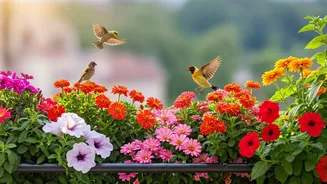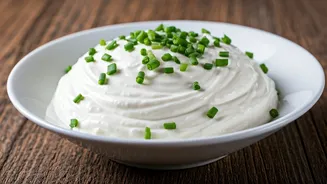Creating Bird Havens
Creating a bird-friendly balcony garden enhances your living space. Selecting the right plants is crucial for attracting various bird species. Understanding
the needs of both the plants and the birds is essential for success. This approach transforms a simple balcony into a lively, beautiful ecosystem.
Marigolds: Sunny Charms
Marigolds are a great start as they are bright and easy to grow, they produce a continuous display of golden and orange blooms. These flowers attract seed-eating birds and offer a colorful, low-maintenance choice. They thrive in sunlight, making them perfect for sunny balconies. Regular watering and deadheading promote continuous flowering and a welcoming environment for avian visitors.
Petunias: Colorful Spectacles
Petunias, with their vibrant variety, are a favorite among balcony gardeners. They come in a wide array of colors and patterns, providing a visual feast. Petunias attract hummingbirds and other nectar-feeding birds. Regular watering and deadheading encourage prolonged flowering, making them a beautiful addition to any balcony garden. Consider planting them in hanging baskets to maximize space and visibility.
Nasturtiums: Edible Delights
Nasturtiums are not only beautiful but also edible, adding a unique touch to your balcony. Their bright, circular leaves and flowers attract hummingbirds. These plants are relatively low-maintenance, thriving in various conditions. The peppery taste of the flowers and leaves adds a culinary dimension to your balcony garden, making it appealing to both humans and birds.
Zinnias: Butterfly Magnets
Zinnias are known for attracting butterflies and, by extension, birds that feed on insects. They come in an assortment of vibrant colors. Zinnias require ample sunlight and well-drained soil. Regular watering and deadheading can extend their blooming period throughout the season. These flowers add a splash of color, making your balcony a lively spot for both birds and other pollinators.
Sunflowers: Giant Blooms
Sunflowers, though large, can be grown in pots on a balcony. Dwarf varieties are ideal. They provide seeds that birds adore, especially during winter months. Sunflowers need plenty of sunlight and regular watering. Their impressive height and bright yellow blooms make a striking visual statement while serving as a food source for birds, adding a touch of grandeur to your urban garden.
Lavender: Aromatic Attraction
Lavender is more than just fragrant; it also attracts various birds and insects. Its purple flowers and aromatic leaves create a calming environment. Lavender thrives in full sun and well-drained soil. The dried flowers can also be used as a natural air freshener. They bring a sensory dimension to your balcony, making it a soothing space for you and an inviting one for the birds.
Pansies: Cool-Season Charm
Pansies offer a delightful burst of color during cooler months. Their cheerful faces and diverse hues add vibrancy to balconies in spring and fall. These flowers are relatively easy to care for and can tolerate some shade. They attract smaller birds and pollinators, offering a year-round attraction. Pansies provide continuous beauty, making them a versatile choice.
Salvia: Hummingbird Favorites
Salvia is a magnet for hummingbirds, with its vibrant colors and nectar-rich flowers. It's available in several varieties, with some blooming all summer. Salvias prefer full sun and well-drained soil. They require regular watering and can be easily maintained. Salvia is an excellent selection to ensure a constant supply of food for your local hummingbird population, adding lively activity to your balcony.
Fuchsias: Elegant Hangers
Fuchsias, with their unique, drooping flowers, are another favorite for hummingbirds. They thrive in partial shade, making them ideal for balconies with limited sunlight. The elegant blooms and varied colors offer an aesthetic appeal. Regular watering and deadheading promote continuous flowering. Fuchsias add a touch of elegance, creating a sophisticated and welcoming environment for birds and garden enthusiasts alike.




